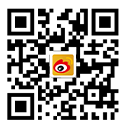背景
人工智能作为创作、法律研究和尽职调查的工具,可以降低成本并提高服务质量,但也带来了输出不准确和保密性问题等风险。
为了应对这些问题,美国专利商标局于2024年2月13日发布了《人工智能辅助发明的发明权指导意见》并于2024年4月11日发布了《在美国专利商标局前使用人工智能工具的指导意见》,旨在告知知识产权从业人员使用人工智能的相关风险,提供减少风险的建议,澄清有关发明权的问题,解决保密和国家安全方面的担忧,并强调诚实和善意的义务。
根据美国专利法第35 U.S.C. 115和116条,发明权仅限于自然人。美国专利法将发明者定义为人类个体,强调构思的心理过程,这是人工智能无法完成的。然而,人工智能可以辅助发明。这意味着,虽然人工智能系统不能作为专利的发明者,但使用人工智能并不会使对发明做出重大贡献的自然人失去被列为发明者的资格。这确保了专利系统激励人类创造力,并为对人类有重大贡献的人工智能辅助的发明提供保护。美国专利法规要求列出对至少一项专利权利要求做出贡献的所有发明者,特别是那些对发明构思做出贡献的人。对于人工智能辅助发明,每个被列名的发明者必须做出“重大贡献”,这意味着他们必须显著地参与发明的构思或实践,将发明付诸实施,或对所主张的发明做出有意义的贡献,超越仅仅解释已知概念的范围。重大贡献是通过Pannu因素来确定的,这些因素评估发明者在构思或实践中的作用。这适用于使用人工智能的单个发明者和联合发明者。如果人工智能系统被列为发明者,该申请将被驳回。如果仅仅对人工智能系统保持“知识上的支配”而没有对发明的概念做出重大贡献,那么使用该AI系统创造的任何发明的个人不会成为该专利申请的发明人。美国专利商标局提供了如下指导,帮助确定自然人对人工智能辅助发明的贡献是否“重大”以确定发明权。关键原则包括:1. 人工智能的使用:仅仅使用人工智能并不会使某人成为发明者,除非他们显著地影响了人工智能的输出。2. 问题的识别:单独识别一个问题并不构成发明权,除非该自然人显著地引导人工智能找到解决方案。3. 实践化:仅仅将发明付诸实施是不够的,但显著提升人工智能输出会符合资格。4. 基本构建模块:创建关键组件或设计人工智能以解决特定问题可具有重大意义。5. 知识上的支配:对人工智能的控制在没有实质性发明贡献的情况下不会被赋予发明权。商标从业者必须避免使用人工智能生成的图像作为商标使用的证据,因为这些图像不显示商标的实际使用情况,因此被视为事实陈述错误。此外,在美国商标审判和上诉委员会的程序中使用人工智能证据时应持谨慎态度,以避免无意中提交不相关的信息,从而被视为不当而被驳回。计算机工具,包括生成式人工智能,越来越多地被用于起草提交给美国专利商标局(USPTO)的文件,如专利权利要求和答复通知书。虽然没有禁止使用人工智能进行此类工作的规定,但所有提交的文件必须由提交文件的人进行审查和签名,以确认其准确性并符合USPTO的规定,特别是37 CFR 11.18(b)条款。这包括核实人工智能生成内容的准确性并确保其符合法律和证据标准。所有提交给USPTO的专利通信文件必须有人签名,以证明其真实性。从业者必须亲自签署他们的文件,不允许他人代签。商标通信文件也必须由从业者亲自签署或按照USPTO指南进行电子签名。签名方依据37 CFR 11.18(b)条款确认声明是真实的,经过合理查询,并非出于不正当目的。这确保了包括使用人工智能辅助起草的文件在内的所有文件都经过审查并且是准确的。未能遵守规定可能会导致制裁。参与USPTO程序的个人必须遵守诚实与善意义务,具体规定见37 CFR 11.303和37 CFR 1.56(a)。这一义务要求披露所有与专利性相关的信息,适用于与USPTO的所有沟通,不仅限于与专利审查员的互动。这包括提交请愿书和OA答复等互动。披露义务作为这一更广泛义务的一部分,要求揭示所有已知的相关信息。它禁止欺诈和故意的不当行为,确保USPTO程序的完整性和可靠专利的颁发。个人必须及时纠正任何错误。这一义务还涵盖复审、PTAB程序和专利期限延长(37 CFR 1.555(a)和37 CFR 42.11),它还包括披露发明人、当事人和从业者使用人工智能工具的信息。诚实与善意义务对于维护专利程序中的信任和效率至关重要。虽然没有义务通知USPTO关于人工智能的使用,但如果人工智能的使用与专利性相关,从业者必须披露这种使用。特别是,如果人工智能起草权利要求或在专利申请中引入缺乏显著人类贡献的实施例,这必须通知专利局。USPTO不容忍在任何程序或IT系统访问中的欺诈或故意的不当行为,包括未经授权的人工智能使用。违规行为可能导致严厉的处罚。在USPTO实践中使用人工智能可能会无意中向第三方披露客户的保密信息,包括技术细节。人工智能系统可能会保留输入数据,存在进一步使用或违反37 CFR 11.106规定的保密义务的风险。从业者必须确保人工智能工具和第三方服务维护客户数据的保密性,特别是在外部存储数据时。此外,如果服务器由非美国人士管理或访问,使用人工智能可能会引发国家安全和出口管制问题。人工智能开发者的数据泄露也可能危及保密性。从业者在使用前必须审查人工智能工具的条款、隐私政策和网络安全实践。人工智能系统不被视为访问USPTO电子系统的“用户”。用户必须创建单独的USPTO.gov账户用于专利和商标申请,账户不得共享(人工智能无法创建账户)。专利中心、P-TACTS和商标电子申请系统需要注册账户。此外,不得使用人工智能系统生成大量流量访问USPTO数据库,也不得以任何其他方式违反USPTO的服务条款。USPTO的指导意见澄清了人工智能发明权问题,确保了适当的信用和合规性。现有规则保护免受人工智能风险的影响,允许使用人工智能辅助起草文件。除非有要求,否则通常不需要披露人工智能的使用。必须保持保密性、国家安全和适当的数据使用。
英文稿
USPTOGuidance on AI-Related Patent and Trademark Issues
AI has introduced tools for content creation, legal research, and due diligence that can lower costs and improve service quality, but it also carries risks such as inaccurate outputs and confidentiality concerns. To address this, USPTO released the “Guidance on Use of Artificial Intelligence-Based Tools in Practice Before the United States Patent and Trademark Office” on 4/11/2024 and the “Inventorship Guidance for AI-Assisted Inventions” on 2/13/2024 to inform individuals about AI-related risks, provide mitigation suggestions, clarify issues regarding inventorship, address confidentiality and national security concerns, and reinforce the duty of candor and good faith.Under 35 U.S.C. 115 and 116, inventorship is limited to natural persons under U.S. patent laws. The Patent Act defines an inventor as a human being, focusing on the mental act of conception, which AI cannot perform. However, AI can assist in inventions. This means that while AI systems cannot be listed as inventors on patents, their use does not disqualify natural persons who significantly contribute to the invention from being listed as such. This ensures the patent system incentivizes human ingenuity and provides protection for AI-assisted inventions with significant human contributions.The patent statutes require naming all inventors who contributed to at least one claim of a patent, focusing on those who contributed to the invention's conception. For AI-assisted inventions, each named inventor must make a “significant contribution,” which means they must significantly contribute to the conception or reduction to practice of the invention, make a meaningful contribution to the claimed invention, and go beyond merely explaining well-known concepts. Significant contribution is determined using the Pannu factors, which assess the inventor's role in conception or reduction to practice. This applies to single inventors using AI and joint inventors. Each claim in a patent must have at least one significant human contribution, and if an AI system is listed as an inventor, the application will be rejected. Maintaining “intellectual domination” over an AI system without significant contribution to the concept of the invention does not, on its own, make an individual an inventor of any inventions created using it.The USPTO provides guidance to determine if a natural person's contribution to an AI-assisted invention is "significant" for inventorship. Key principles include:1. AI Utilization: Simply using AI doesn't make someone an inventor unless they significantly shape the AI's output.2. Problem Recognition: Identifying a problem alone doesn't qualify as inventorship unless the person significantly guides the AI to a solution.3. Reduction to Practice: Merely reducing an invention to practice isn't enough; enhancing AI output meaningfully may qualify.4. Essential Building Blocks: Creating key components or designing AI to solve specific problems can be significant.5. Intellectual Domination: Control over AI doesn't confer inventorship without a substantial inventive contribution.Practitioners must avoid using AI-generated images as evidence of trademark use, as they don’t show actual use of a trademark and are therefore considered misstatements of fact. Additionally, AI evidence should be used with caution in US Trademark Trial and Appeal Board proceedings to avoid unintentionally submitting irrelevant information that may be thrown out as improper.Drafting Patent Documents for USPTO FilingComputer tools, including generative AI, are increasingly used in drafting documents for USPTO submissions, such as patent claims and Office action responses. While there is no prohibition against using AI for this purpose, all submissions must be reviewed and signed by the individual presenting the paper to certify its accuracy and compliance with USPTO regulations, specifically under 37 CFR 11.18(b). This includes verifying the accuracy of AI-generated content and ensuring it meets legal and evidentiary standards.All patent correspondence filed with the USPTO must bear a person's signature, certifying its authenticity. Practitioners must sign their documents themselves, not allowing others to sign for them. Trademark correspondence must also be personally signed by the practitioner or electronically signed following USPTO guidelines. By signing, the party certifies under 37 CFR 11.18(b) that statements are true, made with reasonable inquiry, and not for improper purposes. This ensures documents, including those drafted with AI assistance, have been reviewed and are accurate. Failure to comply may result in sanctions.Duty of Candor and Good FaithIndividuals involved in USPTO proceedings must adhere to a duty of candor and good faith, as detailed in 37 CFR 11.303 and 37 CFR 1.56(a). This duty requires disclosing all information material to patentability, extending to all dealings with the USPTO, not just patent examiners. This includes interactions such as filing petitions and responses. The duty of disclosure, a component of this broader duty, mandates revealing all known material information. It prohibits fraud and intentional misconduct, ensuring the integrity of USPTO proceedings and the issuance of reliable patents. Individuals must correct any errors promptly. This duty also covers reexaminations, PTAB proceedings, and patent term extensions (37 CFR 1.555(a) and 37 CFR 42.11). It includes disclosing information about the use of AI tools by inventors, parties, and practitioners. The duty of candor and good faith is essential for maintaining trust and efficiency in the patent process.While there is no general duty to inform the USPTO of AI use, practitioners must disclose AI usage if it is material to patentability. Specifically, if an AI system drafts claims or introduces embodiments in a patent application that lack significant human contribution, this must be reported. Patent protection requires a natural person's significant contribution, consistent with the USPTO’s Inventorship Guidance for AI-Assisted Inventions. The USPTO emphasizes the importance of internal documentation to comply with disclosure duties and counter future invalidation attempts. This stance aligns with the U.S. Copyright Office's position on human authorship for AI-generated materials.
The USPTO does not tolerate fraud or intentional misconduct, including unauthorized AI use, in any proceedings or IT system access. Violations may result in severe penalties.Using AI in USPTO practice can inadvertently disclose confidential client information, including technical details, to third parties. AI systems may retain input data, risking further use or breach of confidentiality obligations under 37 CFR 11.106. Practitioners must ensure AI tools and third-party services maintain client data confidentiality, especially when storing data externally. Additionally, AI use can raise national security and export control concerns if servers are located or accessed by non-U.S. persons. Data breaches by AI developers can also compromise confidentiality. Practitioners must review AI tool terms, privacy policies, and cybersecurity practices before use.USPTO’s Electronic Systems PoliciesAI systems are not considered “users” for the purpose of accessing USPTO’s electronic systems. Users must create individual USPTO.gov accounts for patent and trademark filings, which cannot be shared (AI cannot create one). Registered accounts are required for Patent Center, P-TACTS, and trademark electronic filing systems. Additionally, AI systems should not be used to generate high volumes of traffic to the USPTO database or in any other way violate USPTO’s terms of service.Conclusion:
The USPTO’s Guidance clarifies AI inventorship issues, ensuring proper credit and compliance. Existing rules protect against AI risks, and AI-assisted drafting is allowed. Disclosure of AI use is not generally required unless requested. Confidentiality, national security, and proper data use must be maintained.
作者:北京品源专利代理有限公司 Alexander Zeng













 首页
首页 电话咨询
电话咨询 联系方式
联系方式






